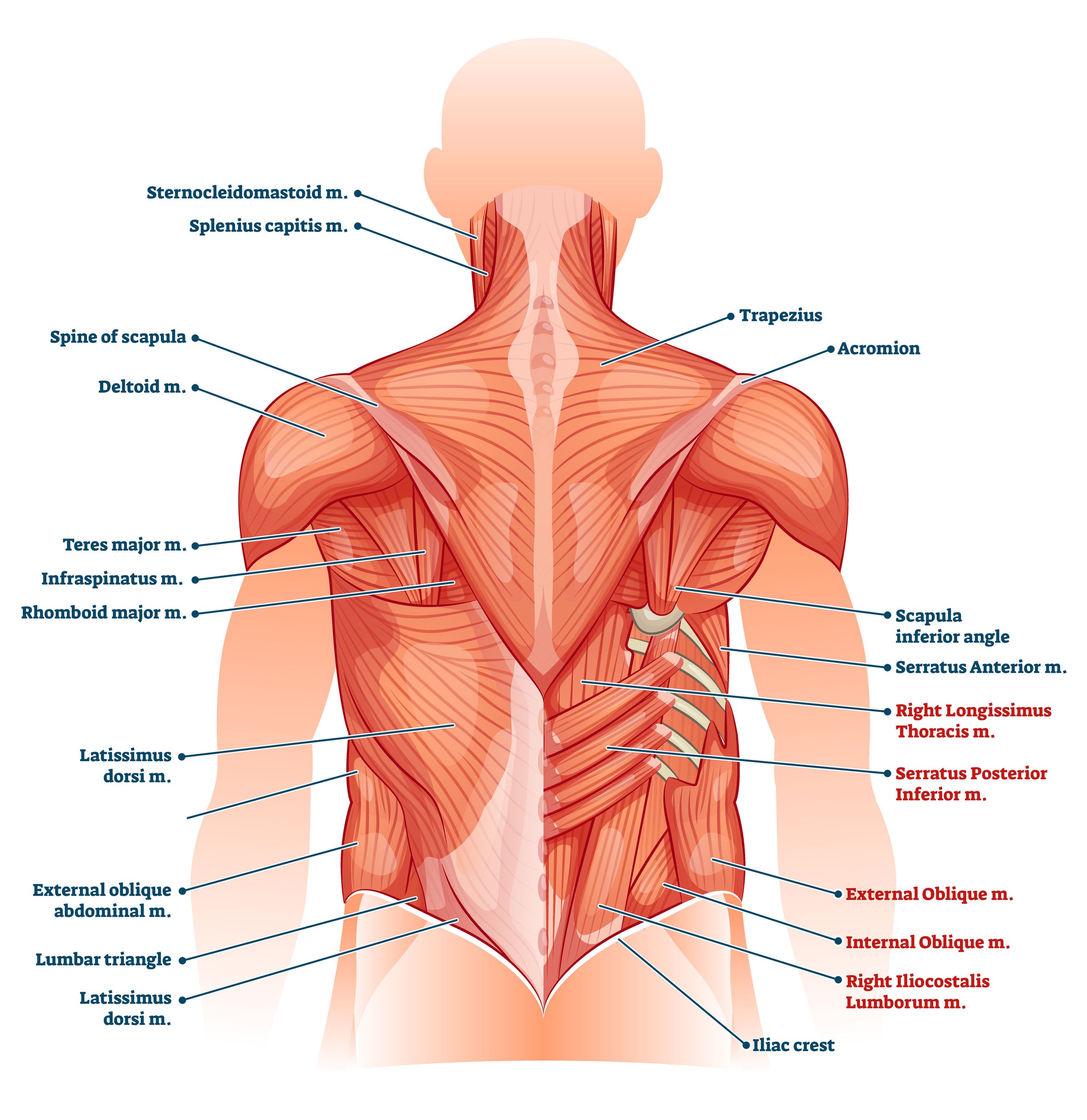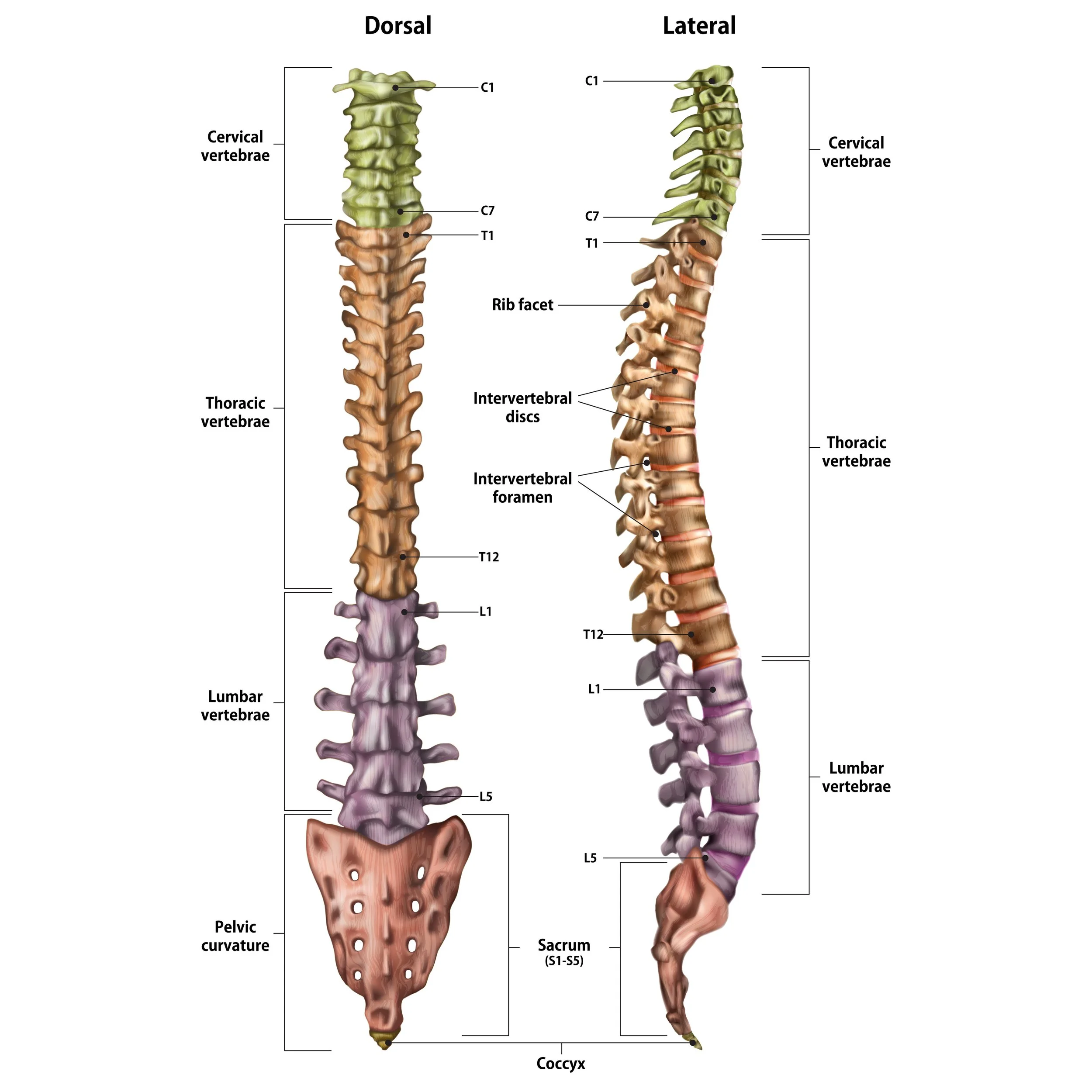Lumbar Spine
The lumbar spine refers to the lower part of the “back”, specifically the region between the thoracic spine (mid-back) and the sacrum (pelvic bone). It consists of five vertebrae labeled L1 to L5. The lumbar spine plays a crucial role in providing stability, supporting the upper body, and facilitating movement.
In the context of physical therapy, the lumbar spine is a significant area of focus due to its susceptibility to various musculoskeletal conditions and injuries. Physical therapists specialize in assessing, diagnosing, and treating these conditions to improve function, reduce pain, and enhance overall quality of life.
Lower Back pain
This is one of the most prevalent musculoskeletal complaints. Physical therapists employ various techniques, such as manual therapy, therapeutic exercises, and modalities, to alleviate pain, improve mobility, and strengthen the surrounding muscles. One of the most important interventions though is simply listening. A PT when given enough time can typically begin to shape a plan of care around your goals when given the demands and activities you would like to return to or improve in.
Some Common Lower Back Injuries:
Lumbar Sprain
Involves the stretching or tearing of ligaments in the lower back. It can result from sudden twisting or bending motions, lifting heavy objects, or traumatic events such as falls or accidents.
Lumbar Strain
A stretching or tearing of the muscles or tendons in the lower back. It often occurs due to overuse, lifting heavy objects improperly, or sudden movements.
Sciatica
A specific type of pain that originates from the sciatic nerve. The sciatic nerve is the longest and thickest nerve in the human body, running from the lower back down through the buttocks and branching out into the legs. When this nerve becomes irritated or compressed, it can cause pain, numbness, tingling, or weakness along its pathway, which is known as sciatica.
Herniated Discs
When the soft inner core of a spinal disc pushes through the outer layer, it can cause pain and potentially compress nearby nerves. Physical therapy aims to relieve symptoms, restore normal movement, and prevent recurrence through targeted exercises, manual therapy, traction, strategies, and postural education.
Degenerative Disc Disease
Age-related wear and tear of the spinal discs can lead to the narrowing of the disc space and the potential impingement of the sciatic nerve and related structures
Spinal stenosis
This condition involves the narrowing of the spinal canal, leading to nerve compression and subsequent pain, numbness, or weakness in the lower back and legs. Physical therapy can focus on stretching exercises, aerobic conditioning, and postural retraining to manage symptoms and enhance function.
Spondylolisthesis
This refers to the displacement of one vertebra over another, typically occurring at the L4-L5 or L5-S1 level. Physical therapy may include stabilization exercises, core strengthening, and manual therapy techniques to alleviate pain, improve stability, and optimize movement patterns.
Lumbar Fracture
A lumbar fracture refers to a break or crack in one or more of the lumbar vertebrae. It can occur due to trauma, such as a car accident or fall from a height, or due to conditions like osteoporosis that weaken the bones.
Compression Fracture
This type of fracture typically occurs in the vertebral body, resulting in the collapse or compression of the vertebra. It is often associated with osteoporosis or trauma, such as a fall or direct impact to the back.
Post-surgical rehabilitation
Physical therapy is vital after lumbar spine surgeries, such as discectomy, laminectomy, or spinal fusion. It aims to promote healing, restore range of motion, improve strength, and enhance functional abilities through specific exercises, manual techniques, and patient education.
Physical therapists employ a combination of hands-on interventions, therapeutic exercises, patient education, and modalities like heat or cold therapy, electrical stimulation, or ultrasound to provide comprehensive care for lumbar spine conditions. Physical therapists also focus on addressing underlying movement impairments, promoting proper body mechanics, and developing strategies for long-term management and prevention of future issues. Our biggest goal is to give you the tools that you can fall back on the rest of your life.
Spine Related Webinars
Spine Related Blog Articles
Disclaimer:
This website is an information and education resource for health professionals and individuals with injuries. It is not intended to be a service for patients and should not be regarded as a source of medical or diagnostic determination, or used as a substitute for professional medical instruction or advice. Not all conditions and treatment modalities are described on this website. Any liability (in negligence or otherwise) arising from any third party acting, or refraining from acting, on any information contained on this website is hereby excluded.
















